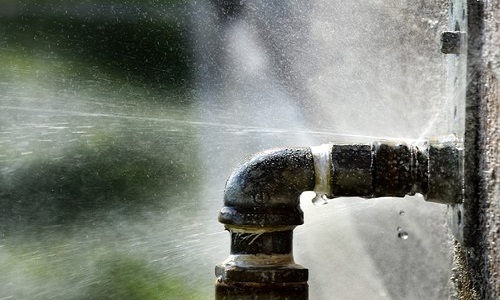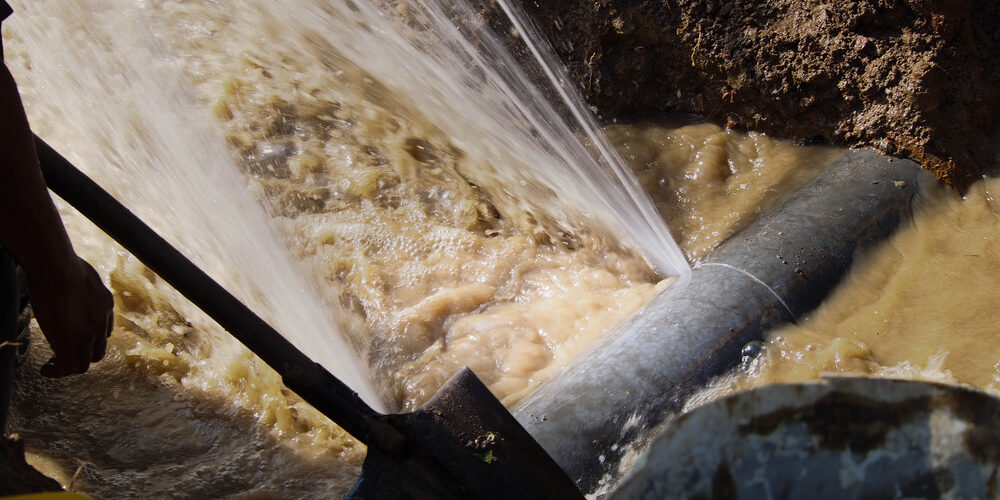A Comprehensive Guide on What You Need to Know About Septic Tank Maintenance
A Comprehensive Guide on What You Need to Know About Septic Tank Maintenance
Blog Article
What are your opinions concerning Rules For Handling Water Damage?

What should you do if a pipes bursts in your house? Do you want a mini-waterfall and flooding in an area of your house? If you find yourself in this situation, you need to act quickly. The longer you wait, the more severe the damage that can happen to your home. The presence of mind is key in these events. For these reasons, you need to learn how to act in the event of a burst water pipe. Check out the following tips listed below to aid you act quickly due to the fact that time is essential.
Shut down the Key Waterline Valve
The first thing to do? Close the shut-off valve. Seek the neighborhood shut-off shutoff to shut off the water in one specific location only. If you don't recognize where the local shut-off valve is, go for the major water line valve and transform it off. This step will certainly remove the water right away in your entire home. Typically, the main shutoff is discovered outside the home alongside the water meter. If it's not there, you can likewise find it in 2 locations: in the basement at eye degree or the first floor on the ground. Commonly, home builders put the shut-off shutoff in the main ground degree restroom or right alongside it.
Call Water Damages Restoration Pros for Aid
After closing the water source, call the experts for aid. With their expert assistance, you can protect against much larger water damages consisting of warped walls, loosened tiles, or damaged frameworks.
Record the Damage For Insurance coverage
While you're waiting on the pros to get here, get some documents of the damage triggered by the wayward pipeline. Take images and videos of whatever. Do close-up shots of the harmed places and valuables. Your documents will act as proof for your property owner's insurance. Maintaining positive with this situation helps you to sue for protection, which will better support you and your family members to return on your feet.
Recover Things That Can Be Saved
When you're done taking pictures, check out the damaged items and also get one of the most essential ones from the pile. Dry them off in a dry/warm area away from the broken area and also try to maintain them as much as you can. Drag as much dampness as you can to the material so it can start to dry out.
Beginning the Drying Process
Fortunately, the water from your waterlines is already tidy so you don't have to worry concerning drain water. The moving water may have interrupted the dust and also debris in your floorboards and rugs. Blot out as much water as you can from the surfaces with old towels.
Professionals are the only people certified to examine appropriately and repair the burs pipelines and also succeeding damage. They typically provide quiet red flags like gurgling paint, water stains.
What should you do if a water pipe bursts in your home? For these factors, you require to learn how to act in the event of a ruptured water pipeline. After closing the water resource, call the professionals for help. With their expert assistance, you can stop a lot bigger water damage including warped baseboards, loose ceramic tiles, or harmed frameworks. Luckily, the water from your waterlines is currently tidy so you don't have to fret regarding drain water.
How to Handle a Burst Pipe and Minimize Damage
Steps to Take Ahead of Time
If you own property in an area that experiences cold weather, you need to be aware of seasonal maintenance tasks that will help you protect your property as the weather changes each year. One of the most important steps is to winterize your pipes to ensure they won't freeze or burst when the temperature drops. This includes action items like insulating any exposed pipes, detaching garden hoses and covering outdoor faucets. If the weather gets cold enough, you may even consider leaving a faucet dripping or opening cabinet doors during the coldest parts of the day.
No matter how prepared you might be, accidents and emergencies still happen. You'd be wise to set up a savings account specifically for your property so you have a "rainy day" fund set aside for unexpected expenses. All homes—regardless of age, location or condition—will inevitably need some form of emergency repair.
Steps to Take for Frozen Pipes
A frozen pipe will not necessarily burst, so if you can catch a frozen pipe early on, you could save yourself a major headache. When your area experiences frigid temperatures, be sure to check your plumbing and keep an eye out for warning signs like faucets only releasing small amounts of water or toilets not refilling when flushed. If you do run into one of these issues, you're likely dealing with a frozen pipe.
If this happens, your first step should be to cut off the water supply to that section of the plumbing. Expanding and freezing water can quickly cause damage. Even if the water supply is shut off, you will likely still deal with some leaking from the water that defrosts after the pipe has thawed. Be prepared with a mop, bucket and/or towels to quickly soak up any excess water.
In order to thaw a frozen pipe, you can use a space heater, infrared or incandescent heat lamp, or even a hairdryer to warm up the frozen area. Heat tape is also an option and should be used according to manufacturer instructions. Do not use any sort of open flame to thaw frozen pipes, as it poses a major fire hazard and can damage your pipes further.
Steps to Take for a Burst Pipe
Water damage claims are the second most common insurance claim in the U.S. When you're dealing with a frozen pipe, the water continues to expand as it freezes, which creates pressure that can cause a pipe to burst. When this happens, the crack or leak in the pipe allows water flow from the pipe to enter your home where it shouldn't. If a pipe does burst, you need to act quickly to mitigate property damage and repair cost.
Your very first step should be to shut off your main water supply to minimize flooding—typically the most expensive damage to address. Once you've shut off the water supply, make sure you identify the entire area that has been impacted by the leak. Remove as much water as possible—as quickly as possible—using a mop, sponges, towels or a shop vacuum or wet/dry vacuum. To prevent long-term damage due to moisture build-up, run a dehumidifier or fan in the affected area. Contact a licensed plumber to ensure the pipe is correctly repaired before running any water to that section of the home again. Burst pipes and the associated water damage are something you absolutely want to avoid as a property owner. If you've had to learn your lesson the hard way, don't let yourself get caught in a similar situation during the next spell of cold weather. The best way to deal with frozen or burst pipes is to prevent them in the first place—proactive winter maintenance will save you time, money and a whole lot of stress.

Hopefully you enjoyed our topic about Water Damage Restoration Do’s And Don’t. Thank you so much for spending some time to browse our article post. Sharing is good. You won't know, you may be helping someone out. I am grateful for your time. Don't forget to come visit our site back soon.
Report this page